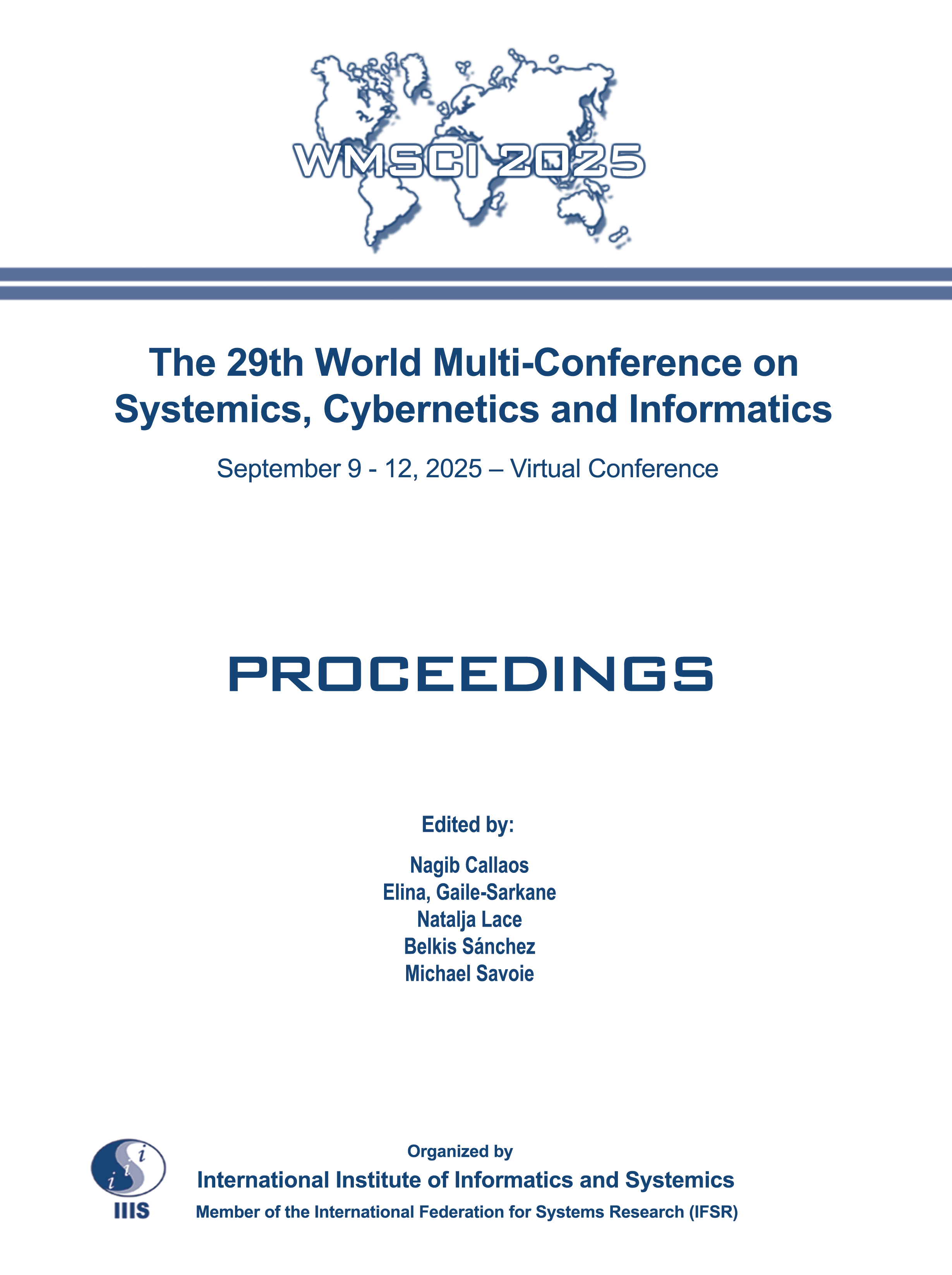2025 Summer Conferences Proceedings

|
Comparative Evaluation of Two Immersive Art Spaces Using ECG Data
Ryohei Nakatsu, Naoko Tosa, Yoshiyuki Ueda, Michio Nomura, Yasuyuki Uraoka, Akane Kitagawa, Koichi Murata, Tatsuya Munaka, Masafumi Furuta
Proceedings of the 29th World Multi-Conference on Systemics, Cybernetics and Informatics: WMSCI 2025, pp. 127-133 (2025); https://doi.org/10.54808/WMSCI2025.01.127
|
The 29th World Multi-Conference on Systemics, Cybernetics and Informatics: WMSCI 2025
Virtual Conference September 9 - 12, 2025 Proceedings of WMSCI 2025 ISSN: 2771-0947 (Print) ISBN (Volume): 978-1-950492-85-5 (Print) |
|
Abstract
To better understand the nature of art, this study investigated how different immersive environments influence viewers' physiological responses during art appreciation. We constructed two immersive spaces with distinct spatial characteristics: Immersive Space 1, which incorporates mirror displays to create a sense of infinite reflection, and Immersive Space 2, which is surrounded by large LED displays. While participants viewed a video artwork created by one of the authors, we recorded and analyzed their electrocardiographic (ECG) data.
The results revealed that in Immersive Space 1, both sympathetic and parasympathetic activities were suppressed during art viewing, suggesting a state of heightened arousal and reduced physiological relaxation. In contrast, in Immersive Space 2, parasympathetic activity was dominant, indicating a more relaxed and emotionally stable physiological state. These findings underscore the significance of spatial context in shaping the embodied aesthetic experience. |
||




